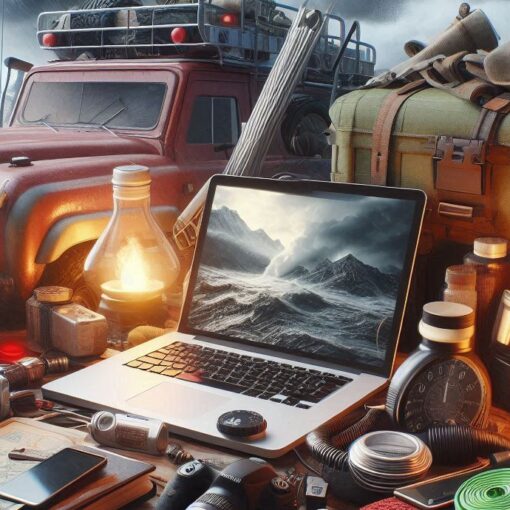
When you think about supply chains, you might picture a giant rubber band stretching from the factories of China to your local grocery store. But what happens when that rubber band snaps? Suddenly, we’re left with empty shelves and people fighting over the last can of baked beans like it’s Black Friday at a discount store.
Understanding supply chain vulnerabilities is crucial for everyone—especially if you want to avoid becoming the next contestant in “Survivor: Grocery Store Edition.”
What Are Supply Chain Vulnerabilities?
So, let’s break it down. Supply chain vulnerabilities are those weak spots that can disrupt the flow of goods from point A to point B. Think of it as a game of Jenga where one wrong move can send everything crashing down.
It could be anything from natural disasters (hello, hurricane season!) to geopolitical tensions (because nothing says “I love you” like trade wars).
Interestingly enough, many folks don’t realize just how interconnected our world has become. When I was a kid, my biggest worry was whether my favorite cereal would be on sale.
Now, I’m concerned that some distant factory might shut down due to unforeseen circumstances, and suddenly there’s no more toilet paper in sight! Who knew life would get this complicated?
The Impact on Daily Life
Now that we’ve established what vulnerabilities exist, let’s talk about how they affect our daily lives—because believe me, nobody wants to go through life without their beloved snacks!
Imagine waking up one morning only to discover that your favorite coffee brand is out of stock for weeks because shipments are delayed. You’d have more chance finding Bigfoot than getting your caffeine fix!
This situation also impacts essentials like food and medicine. In times of crisis, panic buying becomes as common as bad reality TV shows—everyone rushes for supplies until stores look like they’ve been hit by a tornado made of shopping carts.
And all things considered, this isn’t just an inconvenience; it can lead to genuine hardship for families relying on these items.
Personal Solutions: Stocking Up Smartly
Speaking of hardships, let’s chat about personal solutions. One way to prepare is by stocking up smartly—not hoarding like you’re preparing for an apocalypse but being practical about what you need! Start with non-perishables such as canned goods or dried pasta; these items have shelf lives longer than most celebrity marriages.
By the way, remember to rotate your supplies regularly! There’s nothing worse than discovering expired granola bars hidden behind the good stuff during an emergency raid on your pantry. Trust me; stale snacks do not make for happy campers—or happy anyone!
Building Local Connections
Another effective strategy is building local connections. This means knowing who grows your food or where you can find alternative sources for essential items when big-box stores run dry faster than soda at a barbecue party! Farmers’ markets are fantastic places not just for fresh produce but also for meeting people who share similar concerns.
Interestingly enough, small businesses often thrive during times when larger supply chains falter because they rely less on global networks and more on community support—so why not invest in them? Plus, supporting local businesses feels good and gives you bragging rights around the campfire later!
Diversifying Your Supplies
Now let’s talk about diversifying your supplies—this isn’t just financial advice; it applies here too! Instead of putting all your eggs in one basket (or grocery store), consider exploring different brands or even growing some herbs at home if you’re feeling adventurous! Basil tastes great in spaghetti sauce and makes you feel accomplished while saving money.
On the other hand, don’t forget about online options! E-commerce has exploded recently; many companies offer subscriptions for essential items delivered straight to your door—even if it means waiting slightly longer sometimes due to delays caused by those pesky supply chain issues.
Staying Informed
Finally—and perhaps most importantly—stay informed! Knowledge is power when navigating potential shortages or disruptions ahead of time so that nothing catches you off guard while camping out at home watching reruns of old sitcoms (which honestly sounds pretty cozy).
Follow reliable news sources regarding current events affecting trade policies or transportation logistics because every little bit helps.
Let’s see… Who knows? Maybe someday soon there will be apps designed specifically for tracking product availability based on location—a sort-of Tinder app but exclusively for groceries!
Conclusion: Be Prepared!
In conclusion (and yes—I know I sound like every teacher you’ve ever had), understanding supply chain vulnerabilities empowers us all as individuals facing uncertain times ahead together while enjoying delicious snacks along the way!
By planning ahead with smart stocking strategies coupled with local connections plus diversifying supplies wisely—we’ll emerge victorious against whatever challenges come our way!
Suggested Resources:
Understanding Supply Chain Vulnerabilities
https://www.investopedia.com/terms/s/supplychain.asp
The Importance of Local Food Systems
https://www.localharvest.org/about.jsp
How To Prepare for Emergencies
https://www.ready.gov/make-a-plan




